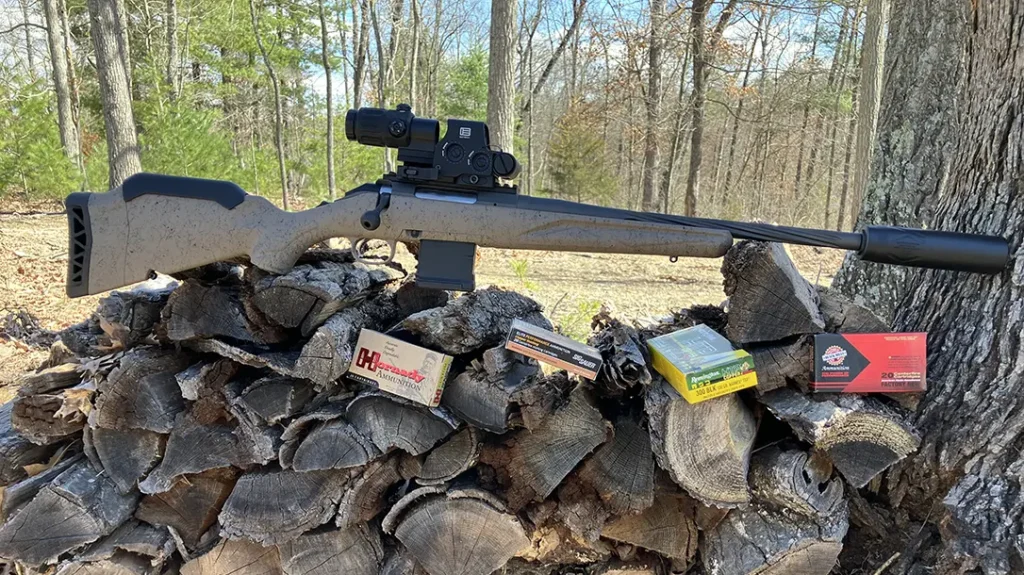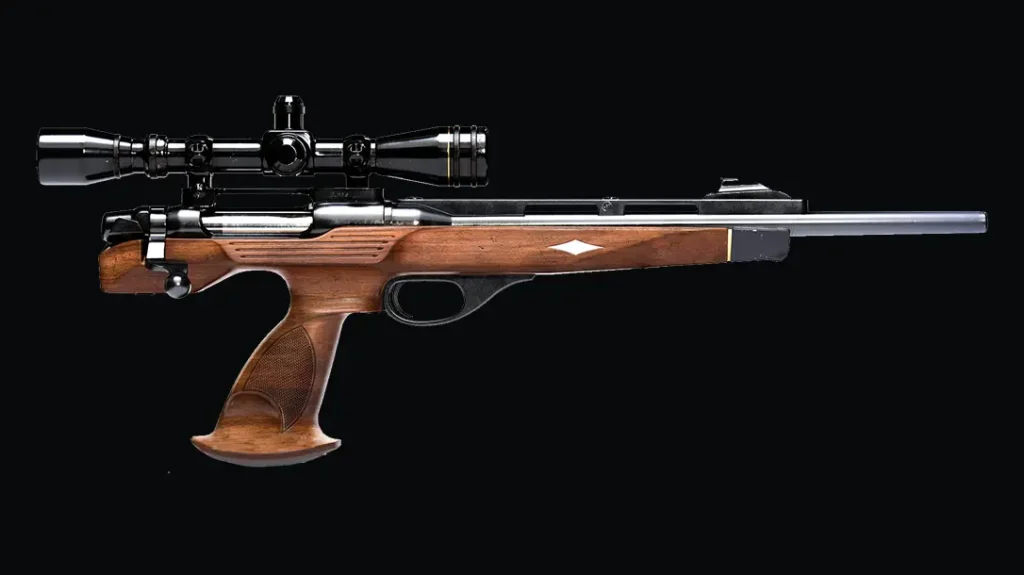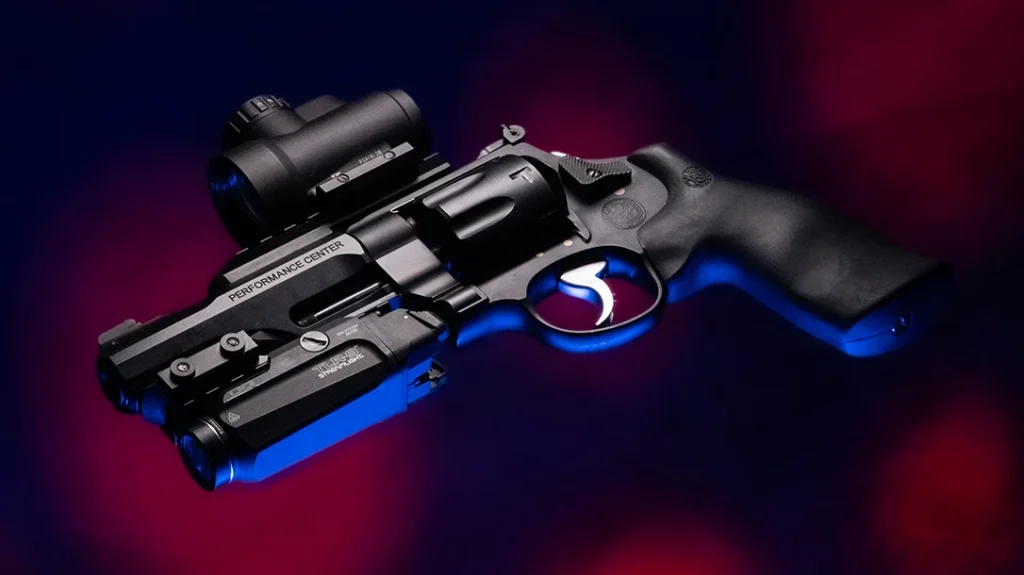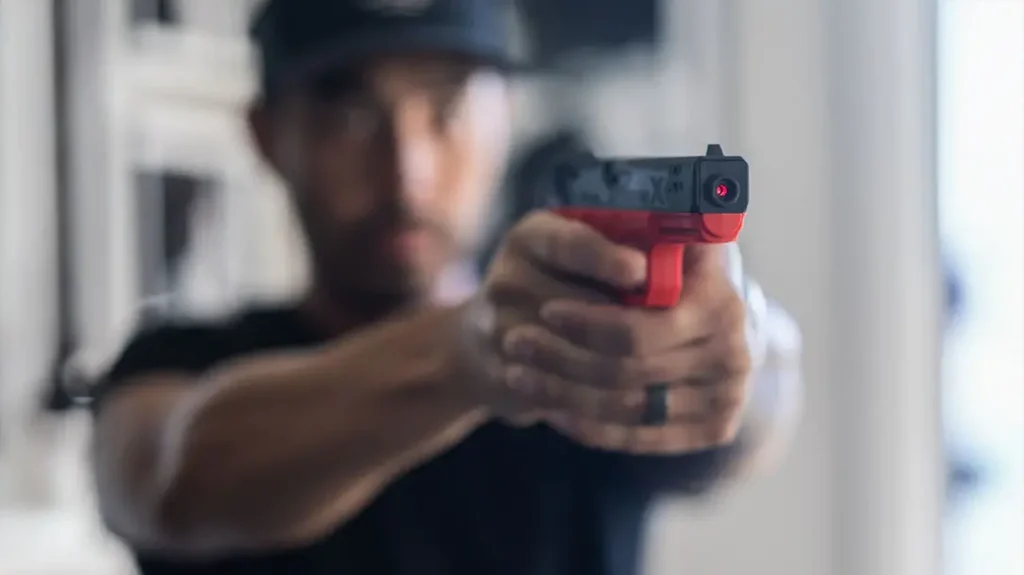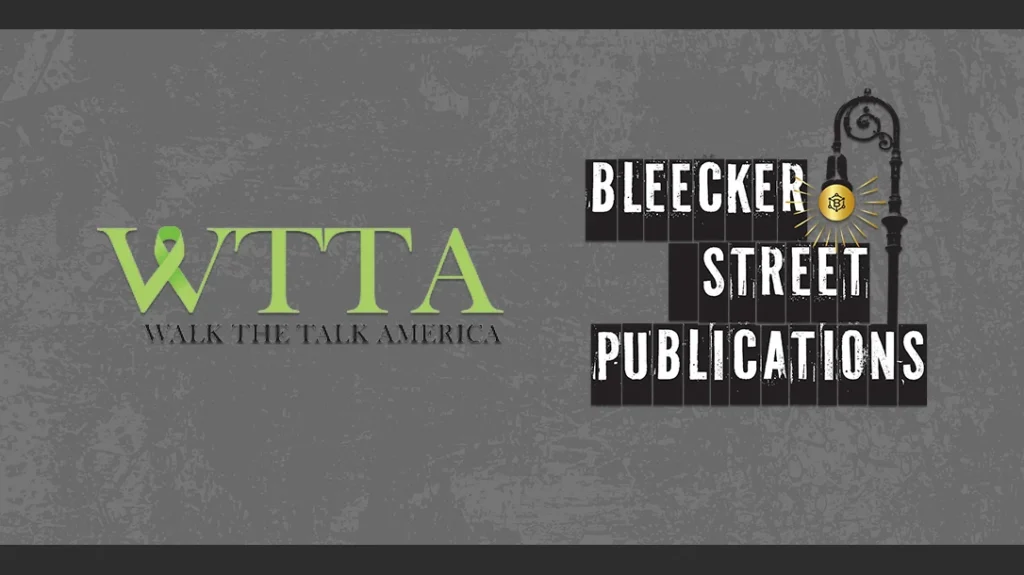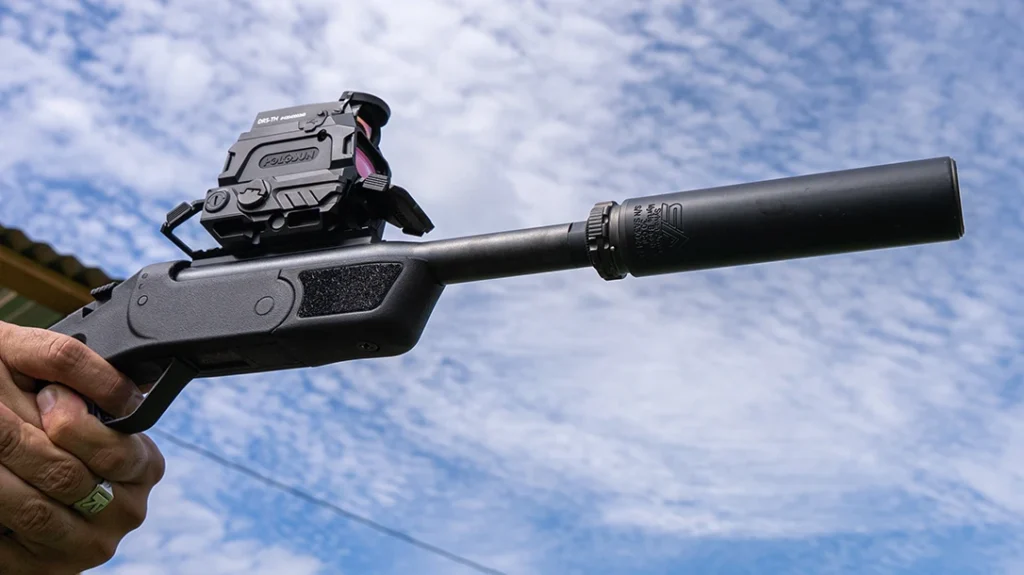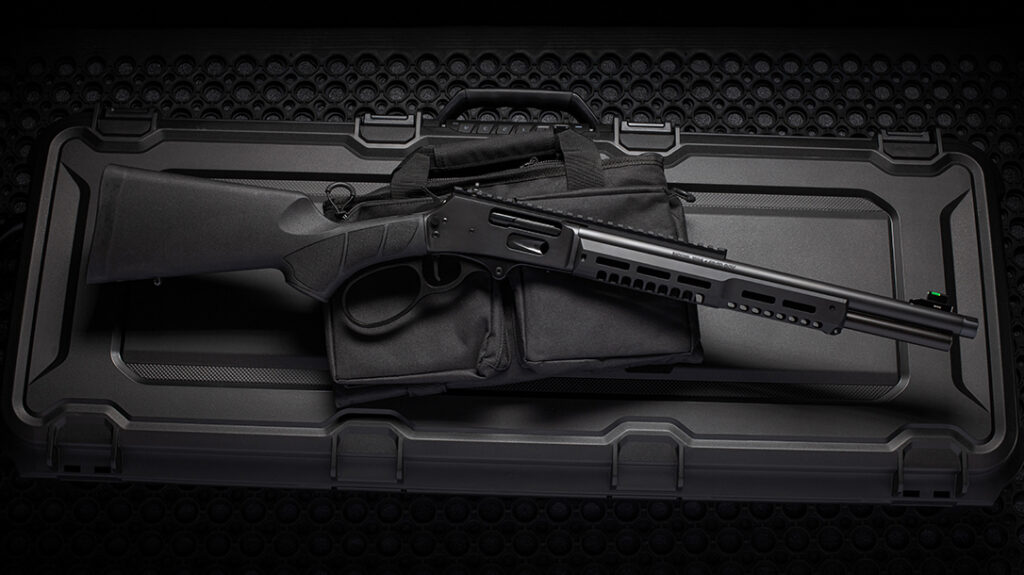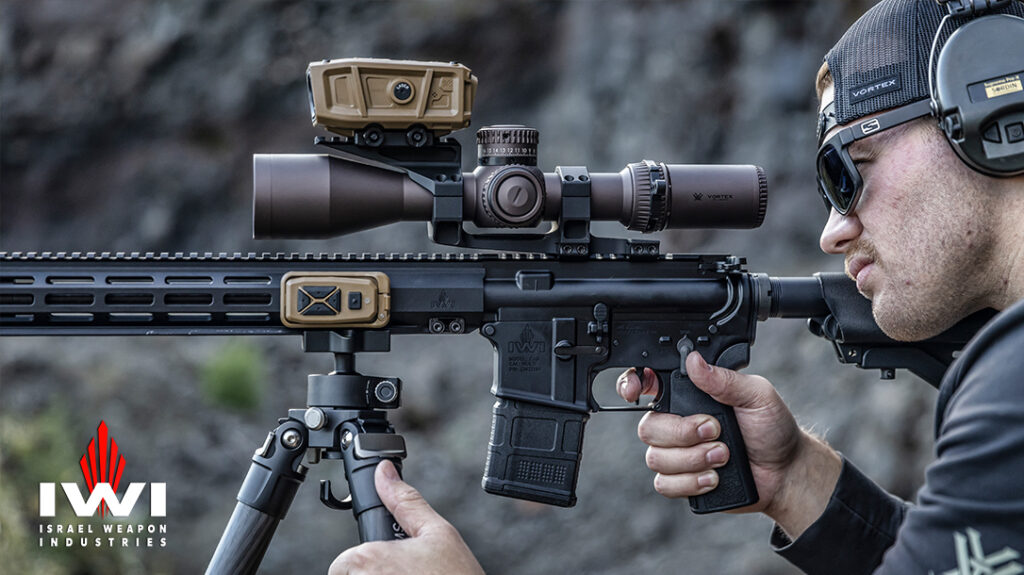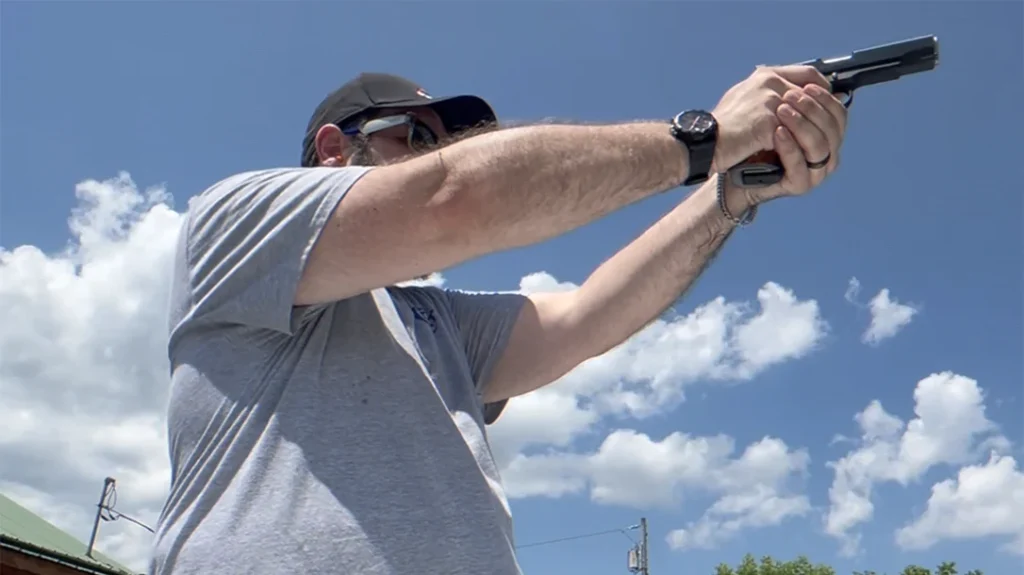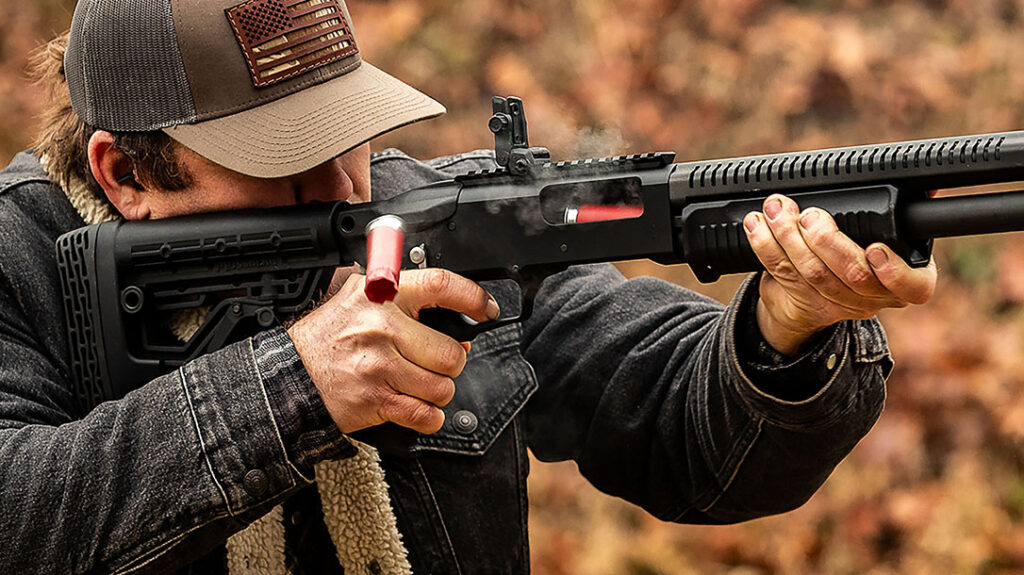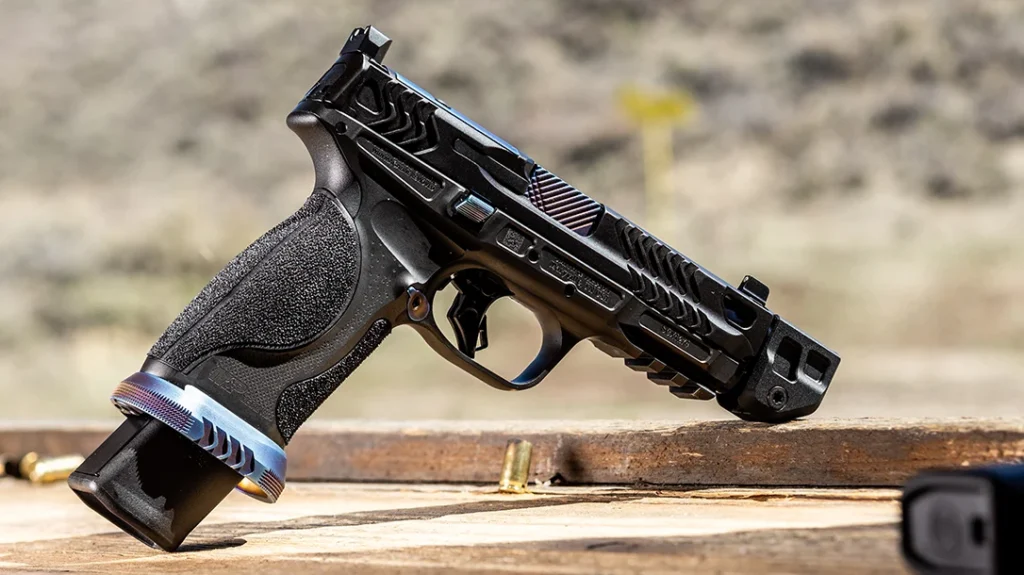The North American Arms Mini Revolver has been on the market since the 1970s, and it is the epitome of a Rule 1 gun. Of course, the first rule of a gunfight is to have a gun on you. The Mini is a tiny single five-shooter that is easy to stow just about anywhere. This allows you an option when you otherwise would not have one. The tradeoff is ease of shooting.
Lipsey’s Exclusive North American Arms Rule 1 Gun
With a short barrel, diminutive one-finger grip, and only a front sight to work with, getting a Mini out and on target in a reasonable time is tricky. And fast follow-up shots are dubious. Lipsey’s Distributors, in partnership with Hamre Forge Grips, is putting a new spin on the NAA Mini with the NAA Rule 1 Gun to fix those deficits.

Advertisement — Continue Reading Below
Features: Small and Substantial
The NAA Rule 1 Gun is based on NAA’s Bugout revolver. It featured a squared-off 1 ½-inch barrel with a target crown and a dovetailed XS Tritium front and square notch rear sight. In addition, it includes a rubberized grip.
The Bugout also featured an improved cylinder pin lock that locks into the cylinder frame rather than the barrel. With identical features, the Rule 1 Gun is also paired with the Hamre Forged Mini Hook grip.
The Mini Hook is a textured wrap-around grip made of PA-12 nylon and secured with a brass mounting screw. On either side of the grip, a stainless-steel pocket clip can be bolted on via three 2-24 mounting screws. This allows the No. 1 to sit in the pocket like a pocketknife.
Advertisement — Continue Reading Below

The clip keeps the pistol oriented for a clean draw and is safe to use as the single-action Rule 1’s trigger is dead when the hammer is down.
However, the most groundbreaking feature of the Mini Hook is the contour of the backstrap. It lengthens the reach of the trigger and hammer so both can be manipulated without shifting the grip. The Mini Hook is also good enough for a two-finger hold instead of the single-finger hold on a standard Mini.
Advertisement — Continue Reading Below
The Rule 1: Standard Mini Operation
Aside from these features, the Rule 1 operates like a standard Mini. The cylinder must be removed for loading, and the cylinder pin can be used to punch out empty shells. The revolver is chambered in .22 WMR and holds five rounds.
There is no safety except the safety notches located between the chambers for the hammer to rest. Although not as neat as the reloading systems on the break-top Ranger or hand-ejector Sidewinder, it is proven and reliable.

Advertisement — Continue Reading Below
Jason Cloessner, Senior Vice President & Product Development Manager at Lipsey’s, initially paired the Mini Hook with the Ranger. However, he found the reloading capability to be less than stellar. Instead, the dense and fine-sighted Bugout was chosen.
Field Impressions: From the NAA Enthusiast’s Mouth
I am a fan of the NAA Mini platform. Conversely, I tend to criticize every detail. Minis started off as a novelty in my collection. But as I got to shooting them, their potential was validated along with their disadvantages.
Although well-built and made of all-stainless steel, these are dainty little guns whose sights and grip make them hard to shoot and tricky to fish out of a pocket. The single-action capacity may not complicate the draw stroke. Still, it makes fast follow-up shots tricky with the combination of small grip, small hammer, and muzzle flip from the .22 Magnum cartridge, which is stout from these diminutive handguns.
Advertisement — Continue Reading Below

I had the chance to fondle the new No. 1 Gun at SHOT Show 2025. By feel and on paper, I knew the Hamre Forge grip alone would fix some retention and shooting issues. Pairing it with the Bugout II revolver, which features real, usable, and visible sights, is a bonus.
But holding it in hand is one thing. Coming to grips with it on the firing line is another. After procuring an example, I dug into my stash of .22 Magnum ammo and headed for the range.
Advertisement — Continue Reading Below
First Shots with the Rule 1 Gun
I started my evaluation by putting rounds on paper and over my chronograph to see how fast those .22 Magnum rounds are going out of the little 1 ½-inch barrel.
The NAA Rule 1, like the base Mini Revolver, is a fire-and-forget proposition. The cylinder must be removed from the frame for loading and unloading. Correspondingly, the standard Mini’s cylinder pin is removed via a push button at the muzzle. As a result, the Rule 1 is more secure and safer.
Press in on the detent to free the pin from the frame and slide it out. Draw the hammer back slightly or put it in the half-cock notch. This allows the cylinder to fall out into your hand for loading. Any empty brass can be punched out with the cylinder pin.
Advertisement — Continue Reading Below

Once the cylinder is loaded, replace it in the cylinder and slide the cylinder pin back in its place. Lastly, drop the hammer into one of the safety notches between chambers to make the revolver safe to carry. Much like an old cap and ball revolver.
I like to keep pressure on the trigger and draw the hammer back slightly for the cylinder to rotate. Then, I let the hammer fall into one of the notches. From there, all you have to do is cock the hammer and press the spur trigger to fire.
Advertisement — Continue Reading Below
Putting Rounds on Paper
I placed several bullseye targets out at seven yards and let fly. I started out with my pet load for the Mini, CCI Maxi Mag 40 grain FMJ. Then I moved on to Hornady Critical Defense 45-grain FTX rounds. All rounds fired perfectly, but I noticed some keyholing of the bullets in the target.
I next tried Winchester Super X 40-grain jacketed soft-points. However, most of those rounds required more than one strike on the rim to fire. The groups were not impressive either.
But back to keyholing for a moment. Sometimes, certain loads will not stabilize enough to fly straight out of very short barrels. That leads to poor accuracy and poor penetration.

I’ve had my fair share of problems with standard Minis coming from the factory with unfinished crowns at the muzzle. But the No. 1 Gun comes with a crisp target crown. The trick is to try your luck with lighter grain ammunition.
I tried some Hornady V-Max 30-grain varmint loads and got a respectable 4-inch group at seven yards for my trouble. This particular Mini likes the lighter stuff. But what about the power of this ammunition?
I set out my Caldwell Chronograph at a distance of six feet and fired five-shot strings. The results are below.
Out of all the ammunition, only the Hornady Critical Defense load is specifically intended for handguns. But the Winchester and Hornady V-Max rounds came out on top in terms of both velocity and energy. Both approached the power of a .22 LR rifle, which is nothing to trifle with.
Getting a Grip
From the first five rounds out of the NAA, despite the ammo troubles, I immediately knew the No. 1 handles unlike a typical Mini. NAAs are typically very jumpy when fired due to their small size. The Rule 1 Gun is still jumpy, but the Hamre Forge Mini Hook grip keeps the gun anchored in the hand.
You have an extra finger to hold onto the revolver, and the thick backstrap allows for a higher hold. The backstrap also puts the first crook of the index finger against the spur trigger and the first pad of the thumb against the hammer—perfect shooting position.
It is particularly handy when shooting with one hand. I could reliably pump out five rounds in four seconds. That is not particularly fast. But I might only be able to crank off two rounds in the same time with the standard Mini. To my surprise, the belt clip protruding from one side did not irritate me or make me change my grip.
The sights also aided in those run times. The XS tritium front sight is not a target sight by any stretch. In my vision, it is just a little smaller than my bullseye targets out at seven yards. But that is not what the sight is for. It is meant to be noticed and fast.
From the draw, the hammer is cocked and the front sight pops bright green in view in the rear notch.
Carrying the NAA Rule 1 Gun
Once you pick which side to mount the belt clip, the Rule 1 Gun is ready to carry. Whether you are looking for an easy second gun or the dress code dictates something that will not print, the No. 1 Gun is a potential option. But there is a trick to placement and orientation to get a full grip on the draw stroke.

I had a hard time drawing the Rule 1 Gun if I clipped the revolver at the bottom of a jacket or pants pocket. Positioned midway along the opening allows for an easy grasp with the middle finger while the thumb rides the backstrap. The thumb is then perfectly oriented to thumb the hammer and take the first shot.
But I found the NAA No. 1 to shine best for carrying along the belt line in attire with no belt, ie, jogging shorts, pajamas, etc. I spent most of my time in either of those, and slipping the Rule 1 inside the waistband and covering it with a shirt makes it invisible.
The Rule 1 Gun: North American Arms’ Best Yet?
The product development teams at North American Arms and Lipsey’s may have the best Mini revolver on their hands. Despite my ammo woes, I managed to get through two hundred rounds of .22 Magnum ammo with little problem. After finding the preferred load, it is reasonably accurate and reliable.
Despite its light construction, the slab-sided barrel and sights make for a better-balanced and shootable package. But by far, the best addition is that Hamre Forge grip. It makes quick shooting feasible and allows you to carry a Mini just about anywhere.
If you have a Mini that you are already partial to, the Mini Hook is worth pulling the trigger on. However, if you want a Mini as your Rule 1 Gun, the Rule 1 Gun from NAA is the complete package.
North American Arms Rule 1 Gun Specs
| Caliber | .22 Winchester Magnum Rimfire |
| Capacity | 5 |
| Action | Single-Action Hammer-Fired |
| Frame | 17-4 Stainless Steel |
| Barrel Length | 1.5 inches |
| Overall Length | 5.2 inches |
| Width | 0.84 inch |
| Height | 3.1 inches |
| Weight | 8.2 oz. loaded |
| MSRP | $425.00 |
Performance
| CCI Maxi Mag 40 gr. FMJ | |
| Muzzle Velocity | 970 fps |
| Energy | 84 foot pounds |
| Winchester 40 gr. JSP | |
| Muzzle Velocity | 1124 fps |
| Energy | 112 foot pounds |
| Hornady Critical Defense 45 gr. FTX | |
| Muzzle Velocity | 1003 fps |
| Energy | 89 foot pounds |
| Hornady 30 gr. V-Max | |
| Muzzle Velocity | 1236 fps |
| Energy | 102 foot pounds |

